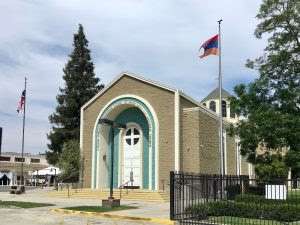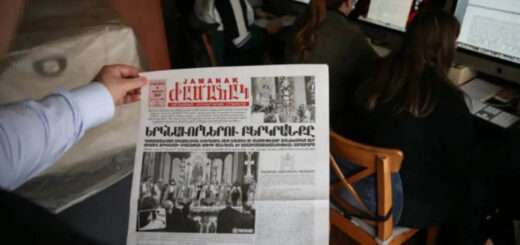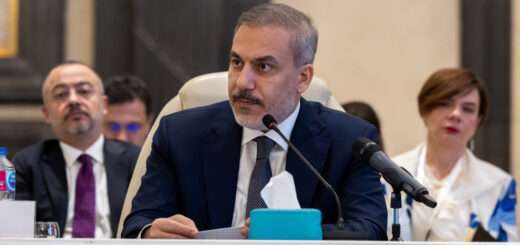Why the San Fernando Valley Needs an Armenian Community Center

Other minority groups have community centers that preserve culture and provide services. Armenians in the Valley deserve the same
By Vic Gerami
The San Fernando Valley is home to one of the largest and fastest growing Armenian populations in the United States. In neighborhoods such as North Hollywood, Van Nuys, Sun Valley, Panorama City, Valley Glen, and NoHo, Armenian families, small businesses, students, and seniors have built vibrant lives. Despite their presence and contributions, there is no Armenian community center in the Valley. The absence of such a hub leaves a critical gap in services, cultural preservation, and representation.
Los Angeles has a long history of supporting its diverse populations through publicly funded cultural and community centers. Latino, Korean, Filipino, African American, Jewish, and LGBTQ+ Angelenos benefit from facilities that provide social services, preserve heritage, and promote civic engagement. Armenians, by comparison, remain without an equivalent space, even though they make up one of the largest and oldest immigrant populations in Los Angeles. This disparity is not only inequitable, it is indefensible.
While a precise number is not available, the Eastern San Fernando Valley communities of North Hollywood, Valley Glen, Van Nuys, Panorama City, and Sun Valley collectively house a substantial Armenian population, estimated to be around 100,000 residents.
Some point to a small youth-oriented space in Encino as evidence that the Armenian community has a center. While such projects are welcome and important, they are not an answer to the larger need. Encino is not where the greatest concentration of Armenians live. The majority are in North Hollywood, Van Nuys, Sun Valley, Panorama City, Valley Glen, and NoHo. Moreover, the Encino site is limited in scope, designed primarily for youth, and lacks the capacity to serve seniors, families, and the broader community. What is needed is not a token gesture, but a comprehensive, full-service center located where Armenian Angelenos actually live.
A real community center for Armenians in the San Fernando Valley would serve many purposes. It would offer cultural programming, preserve the Armenian language and traditions, and provide after school tutoring and mentorship for youth. Seniors would benefit from wellness programs and social activities. Immigrant families could access ESL classes, legal aid, and small business development support. Just as important, the center would serve as a place of safety, empowerment, and cross cultural exchange. In a climate where immigrant and minority groups are often targeted with hate and disinformation, such a space is essential.
The responsibility to make this vision a reality falls on elected officials at every level of government. The Los Angeles County Supervisors representing the Valley, Lindsey Horvath and Kathryn Barger, must lead the way. On the City Council, Adrin Nazarian, Imelda Padilla, and Nithya Raman should take action on behalf of their constituents. At the state level, Senator Caroline Menjivar and Assemblymember Luz Rivas must prioritize this initiative. In Congress, Tony Cárdenas and Brad Sherman can leverage federal support to help close the gap.
For too long, many elected officials have treated the Armenian community as a talking point rather than a partner. They show up before elections, deliver passionate speeches, pose for photos, and make sweeping promises. After the votes are counted, the commitments evaporate. This kind of transactional outreach is not only self-serving, it is insulting to a community that has given so much to Los Angeles. Armenians must recognize this pattern for what it is: political tokenism. It is time to hold leaders accountable by demanding concrete action and real investment, not just rhetoric. Our community should not reward empty promises with automatic votes. Leaders must put resources, policy, and funding behind their words before they can expect our support.
Other minority groups already have centers that serve as lifelines for their communities. Armenians, who have been part of Los Angeles for generations and who have enriched the Valley with their businesses, churches, and civic engagement, deserve the same. To continue ignoring this need is to deny equal treatment to a community that has long been a cornerstone of Los Angeles life.
Looking forward, a full-service Armenian community center could also partner with LAUSD, Valley colleges, nonprofit organizations, and neighborhood councils to deliver programs that strengthen the region as a whole. By hosting job fairs, educational workshops, public health initiatives, and cultural exchanges, such a center would not only serve Armenians but also create shared opportunities that benefit every resident of the Valley.
The time for an Armenian community center in the San Fernando Valley is now. Public leaders must recognize the urgency, allocate resources, and provide the political will to make it happen. When one of Los Angeles’ largest communities is given the tools to thrive, the entire city and county benefit.








